3D Printing is one of those fascinating technologies that are both new and old simultaneously. A lot has happened recently, but the technology itself isn’t new. Since its invention in 1984 by Chuck Hull, it’s been used to print everything from guns to jet engines. However, some companies have been using it since the 1980s to print prototypes and models.
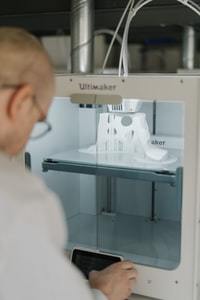
As the world becomes more complex and specialized, it is beneficial to move towards technologies that can take on various tasks. One of those technologies and processes becoming more and more mainstream is 3D Printing. It’s been around for quite some time. Still, it has recently become much more accessible and affordable, potentially eventually changing industries and even our everyday lives.

The World’s First 3D Printed Car, The Strati
Strati is an electric car developed by Local Motors and manufactured in collaboration with Cincinnati Incorporated and Oak Ridge National Laboratory.
Best 3d printer for beginners. Flashforge Adventurer 3, which sold 100,000+ units, allows you to get started with 3d printing quickly and effectively.
It is the world’s first electric car to utilize 3D Printing during production heavily. 3D Printing (3DP) is the process of making a three-dimensional solid object of virtually any shape from a digital model. The technology used in 3D Printing is also called additive manufacturing technology or “AM.”
3D Printing is achieved using additive processes. In an additive process, an object is created by laying down successive layers of material until the entire model is created. 3D Printing is designing a three-dimensional product constructed by printing layer by layer. The most commonly used 3D printing technologies include:
Stereolithography
Stereolithography, or SLA, is one of the oldest 3D printing technologies. It uses a laser to cure U.V. curable photopolymer to create 3D printed objects. The layer-by-layer printing process is very similar to SLA.
I will discuss the history of 3D Printing, explain how the process works, and give you an overview of the different 3D printing technologies. Finally, I will discuss possible future uses for the technology, such as printing living tissue and organs.
The Stereolithography 3D printing technique was invented by Charles (Chuck) Hull in 1986. He received a patent for his invention in 1989. Chuck won the Nobel prize for his design in 1986. The printing technology was developed out of the desire to produce dental models. It was also used for manufacturing other items such as jigs and fixtures. The first industrial SLA machine was commissioned in 1988 by McDonnell Douglas Corporation.
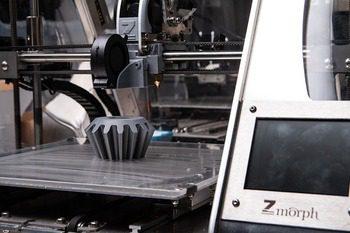
History
The first patent for 3D Printing was submitted to the U.S. patent office on June 23, 1989, by Dr. Hideo Kodama and Dr. Yoshiro Nagasaka. The patent was for a part-making technique, and it was not a very practical technique. The process used a laser and a photosensitive material, which created a solid object. The applications of 3D Printing are vast, and only time will tell.
In 1984, a man named Chuck Hull invented stereolithography. Later this technique was combined with an inkjet printer, creating the first 3D printing device. Since the beginning of history, humans have crafted, shaped, and reshaped the world around them. They started with simple tools and progressed to controlling steel, titanium, and even silicon.
Today, we use 3D Printing for various applications, from crafting intricate toys to printing prosthetic body parts, medical equipment, and even guns. The technology behind 3D Printing is also rapidly improving and revolutionizing the world of medicine and bioprinting. What’s the fuss about?
3D Printing is an additive process that works by creating tiny points. And laying them out in a design to form an object, similar to how ink is laid on paper, makes images. This technology is used in many industries but isn’t widely used for end-use manufactured goods.
Commercial 3D printers work by melting thermoplastics with a hot nozzle on a print head and laying them down over an object in layers. The whole process is controlled by software, giving the user control over the size and complexity of the printed object.
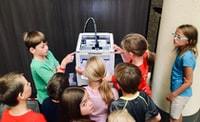
3D printing technology disrupts the manufacturing sector, so it is widely used by the medical industry today. Bioprinting is a similar process but uses human cells, instead of ink, to ‘print’ human tissue. To do this, scientists first must grow large quantities of cells on a material that can be used to print.
This allows the cells to grow and reproduce. The cells must be ‘inked’ and placed into the printer. 3D Printing creates a physical object directly from a digital model, using various materials.
The printer works in layers, with the lower layers taking more time than the above. For example, a 3D printer would lay down a layer of nylon powder, and then a laser would fuse it with the powder below it. After that layer is completed, the printer moves down by one layer, repeating the process.
3D Printing is still a largely experimental technology. Still, additive manufacturing has great potential in many industries, such as medicine, construction, and engineering.
This year, the United States Federal Aviation Administration (FAA) ruled that passengers with 3D printed items will not be subject to security screening. However, it is expected that 3D Printing will be used for end-use manufacturing in the next 5 to 10 years.
3D Printing has been used for medical purposes for a while now. In 2008, a 3D-printed jawbone was implanted onto a woman’s face, and the medical experts reported successful surgery. In 2009, scientists produced 3D-printed ears; in 2010, a 3D-printed vertebra was implanted in a woman in Germany.
In 2011, a 3D-printed titanium jawbone was implanted on a patient in the U.K.
In 2012, a 3D-printed skull was embedded in a woman in the U.K.
In 2013, a 3D-printed skull bone-year-old woman in the United States.
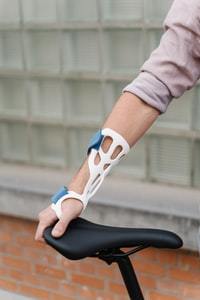
However, due to the lack of resources, the cost of 3D Printing is much higher than traditional manufacturing, which is a significant challenge for developing countries.
Here, the use of 3D Printing in the medical sector will likely remain limited in the short term. Even if 3D Printing becomes easy to use and cost-effective, it will still be challenging to replace traditional manufacturing. Medical professionals have also used 3D-printed prosthetic devices for years.
3D-printed Pizza
3D Printing also enables the creation of food items such as cookies and pizza. The first 3D-printed pizzas printed in the United States were displayed in 2014. The pizza was designed by Momentum Machines, an American company that develops and manufactures robots. The two robots of the company print the pizzas.
A 3D-printed heart valve and ear have also been developed, and the use of 3D-printed limbs has been proposed. Materialize NV (NASDAQ: MTLS) and Organovo Holdings Inc. (NYSE: ONVO) are two other companies in the 3D printing space, along with Stratasys Ltd (NASDAQ: SSYS), which develops and sells 3D printers, software, and materials.
In 2011, a man was admitted to a hospital in the Netherlands with a broken leg. After the doctors made a plaster cast around the patient’s leg, the limb was scanned into a 3D computer file using a 3D scanner.
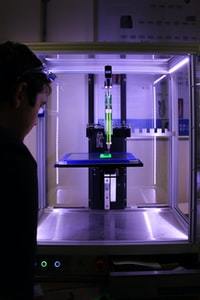
After doctors made the 3D-printed prosthesis, they attached it to the patient’s leg. In 2014, a man named Neil Harbisson became the first person in the world to be officially recognized as a cyborg.
3D Printing is a form of additive manufacturing. A 3D printer builds a 3D object by adding more material, layer by layer, to create an object. 3D printers have been around for decades but are only now becoming affordable for the general public.
The material extrusion process that drives the 3D printer was recently expensive and challenging to scale. As one of the technologies that could change the world, it’s not surprising that 3D Printing is a hot topic for discussion among students, career seekers, and professionals. So today, I want to take you on a tour of the world of 3D Printing and share the top 3D printing jobs of the future.
3D printing jobs: In the state of the industry, a project has been started to develop an open-source 3D printer to create a machine that anyone could make. Sam Cossman, a Philadelphia-based designer and artist, launched the Open Source Scanning Repository (OSSR) project on July 21, seeking to develop an open-source 3D printer. It will also build a database to share files so people can create their versions.
Just yesterday, the first 3D-printed house was unveiled in China. The company behind the innovation, Shanghai WinSun Decoration Design Engineering Co, plans to build ten more homes before the end of the year. They’re hoping to produce around 30,000 in the next two years.
The 3D printing technology is fast and efficient. It could drastically change how we build homes, even other structures, and the architecture itself. But what exactly is 3D Printing, and what does it mean for the future?

Traditional Manufacturing Techniques
Traditional manufacturing techniques like injection molding, milling, and stamping consist of a material being forced into a mold and coming out in a precise shape. These techniques are relatively automated and can create incredibly complex parts. Still, they are wasteful and not always suitable for the modified production runs that are becoming increasingly common. A fusion of modern technologies
3D Printing, in contrast, is more of a fusion of current technologies. It is a technology that started to gain momentum in the 1990s and is becoming more and more popular as it becomes more accessible. It relies on a digital file and computer technology to design a physical object.
This file then goes to a computer-controlled machine that builds the object layer by layer, just as a printer does when printing an image. It is why 3D Printing is so essential. At the same time, 3D printers cannot produce every single product made through traditional manufacturing. They can create far more products than a standard manufacturer can imagine.
For example, a company may need just a few dozen parts. Still, traditional manufacturers would have to invest in producing thousands of them. 3D-printed houses these techniques also have the drawback of being time-consuming. There’s a significant amount of time between ordering a single part and getting it.
Instant manufacturing
3D Printing, in contrast, produces apart as soon as it’s ordered. That’s why it’s known as additive manufacturing. The printer starts with a single layer of material, either plastic or metal, and then adds more layers to build an object.3D printing is to the rescue.
3D Printing is the new kid on the block, offering a way to manufacture complex objects at a relatively quick pace. Several different materials are used in 3D Printing, including polymers, metals, ceramics, and even food. 3D Printing can range from a single layer at a time to multiple layers, resulting in complex objects with more intricate designs.
This post was proofread by Grammarly.
A brief history of 3D printing injection molding and milling can also be costly, especially regarding the cost per part compared to 3D Printing. These traditional manufacturing methods have their place in the industry but are often not the best solution.
Please leave them in the comments below if you have any additional questions.

Start 3D Printing!
We would love to know what you think. Would you do us a favor and leave a comment if you have a moment?
It enables us to improve upon everything we do.
We’ve made leaving a comment or question easy! Just go below.
Some of the links in this article are affiliate links. If you were to buy something after clicking on one of these links, I would get a small commission.
Thanks for being part of the community!
Bullwinkle
Hello,
As an eCommerce seller, the first physical touchpoint you’ll have with a customer is when your package arrives at their door, an impactful impression is critical.
Fulfillment marketing, a cutting-edge solution crafted by my friends over at The Fulfillment Lab, is designed to make the unboxing experience memorable by bringing marketing and fulfillment together at scale!
With this strategy, you can create a unique order fulfillment experience using data you’re already capturing—without sacrificing speed or scalability. It makes it possible to:
- Build brand recognition. With increasing competition for eCommerce businesses, you need a way to differentiate and build brand recognition. Fulfillment marketing is that solution!
- Tailor the customer experience. Personalize the fulfillment experience to each buyer using marketing data you’re already collecting—delivering a unique customer experience that’ll leave a lasting impression.
- Create brand advocates. Turn one-time buyers into repeat buyers and loyal advocates for your brand. You make it easier to attract new customers driving additional revenue from repeat sales while expanding your new customer base.
I figured you’d like to do this in your organization, so I’m connecting you with The Fulfillment Lab! Click this link [HERE] to get started with their fulfillment services today, or contact them directly if you have more questions.
The Fulfillment Lab, 5136 W Clifton St, Tampa, FL 33634, (813) 444-3455



